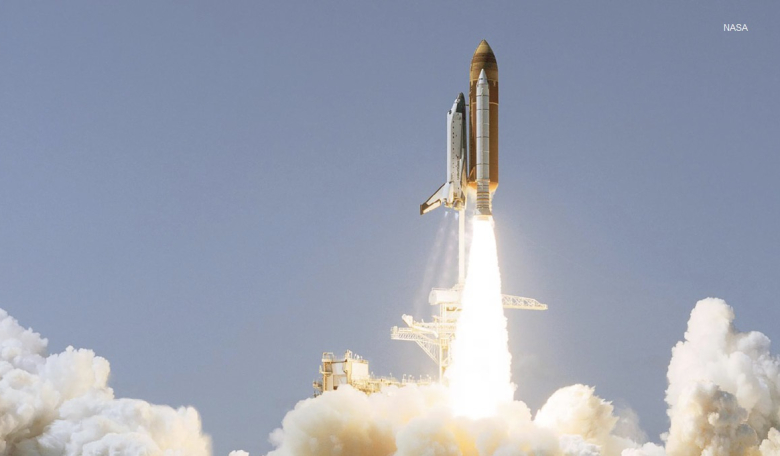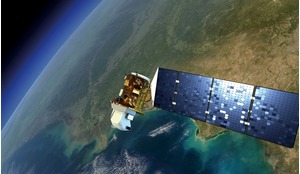There is a roadmap for space launch that uses only proven technology and which could greatly reduce costs by providing airline-like transport to orbit. Its key features are full reusability and the opening up of large new commercial markets to provide greatly increased launch rates and economies of scale. David Ashford champions this radical but practical way ahead.
Imagine a new Space Age in which a fleet of rocket-powered aeroplanes looking not unlike Concorde make frequent flights to and from orbit. Costs are low enough for millions of passengers per year to take a trip to space. In-orbit manufacture is a large-scale commercial enterprise, and the development of space-based solar power is no longer held back by high transportation cost. Large probes are visiting most objects of interest in the solar system, and space telescopes larger than terrestrial ones are enabling breakthrough discoveries. There are wide environmental benefits.
This is not a science fiction dream. There is a roadmap for space launch that could achieve this scenario within about 15 years, using only proven technology and with a compelling business case. The initial steps are remarkably inexpensive. At Bristol Spaceplanes we believe this is a rare example of something that seems too good to be true actually being true.
To help you to decide if this is indeed the case, the roadmap is described here as the basis for discussion. As will be explained, it involves catching up rapidly with a line of development that was started in the 1960s but was then abandoned and is now largely forgotten or overlooked.
The basic premise behind the proposed roadmap is that the best way to greatly reduce launch costs is to develop airline-like transport to and from low orbit, which clearly requires the development of fully reusable launchers.
Another requirement is for a greatly increased launch rate to provide economies of scale and the funding to develop mature launchers – there are currently only about 200 satellite launches per year compared with some 40 million commercial airline flights.
A greatly increased launch rate in turn requires the opening up of large new commercial markets. The game-changing launcher will therefore be the one that best meets the needs of these new markets, which raises the question of what should be its basic design feature. We have worked up an original logic to answer this question.
The following sections consider the new markets, our design logic, a description of the new launcher itself, some historical background, and the environmental balance sheet of low-cost launch.
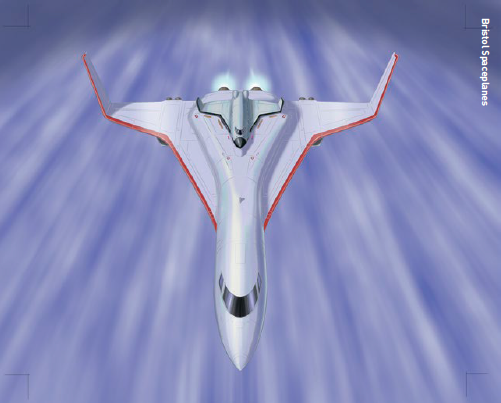 The Bristol Spaceplanes’ Spacecab two-stage orbital spaceplane concept.
The Bristol Spaceplanes’ Spacecab two-stage orbital spaceplane concept.
Commercial markets
The best way to greatly reduce launch costs is to develop airline-like transport to and from low orbit
There are big gaps in existing plans for space transportation. There is still no generally accepted roadmap for the development of potentially very large new commercial markets such as in-orbit manufacture, space-based solar power and orbital tourism. Market research by the UK Civil Aviation Authority (CAA), Bristol Spaceplanes and others indicates that these markets are potentially worth several tens of billion GBP per year.
Space manufacture will require raw materials to be transported up to a factory in orbit, and finished products down. Space-based solar power will require regular launches for assembling the platforms and for maintenance. Orbital tourism will require the regular transportation of passengers, crew and supplies to space hotels. These new markets will therefore require the regular transportation of many tonnes of material to large orbital platforms, and their development is thereby held back by today’s high launch cost, despite recent reductions.
By contrast, the commercial markets that have so far become profitable involve transporting only small amounts of mass. These markets include communications, direct broadcasting, navigation, Earth observation and weather forecasting. In each case, satellites are used to receive, process and transmit data. Each satellite can handle large quantities of data over its lifetime, so a high launch cost per tonne of satellite is not necessarily a major handicap.
Design logic
The new markets, especially tourism, will lead to a large increase in the number of people travelling to space. This in turn will lead to a requirement for greatly improved safety. There is an interesting comparison to be made with commercial aviation. There are approaching ten million commercial airline flights per fatal accident. By contrast, the Space Shuttle had two fatal accidents in just 135 flights over a 30-year period. The safety of the crew depended on large and complex single-use components. Launch safety has improved considerably since the Space Shuttle but still falls far short of aviation standards.
Since we want to achieve this high level of safety as soon as is practicable, the design driver for the new game-changing launcher can be summarised as ‘safety soon’.
The need for greatly improved safety suggests that the new launcher should be designed to airliner standards as far as is practicable, as these are the safest flying machines yet built. It should therefore be fully reusable, piloted, and have wings for taking off and landing using conventional runways. Full reusability improves sustainability, as does the use of hydrogen fuel.
While it is possible that the required safety levels could eventually be achieved by launchers that are recovered by vertical landing under the control of an autopilot (like the forthcoming fully reusable SpaceX Starship), or by parachute, it is likely that an aeroplane-like launcher (spaceplane) could achieve it sooner, as many of the safety lessons from a century of hard-earned experience with commercial aviation can be applied directly. Moreover, launchers that are winged and piloted are likely to have greater passenger appeal than the alternatives.
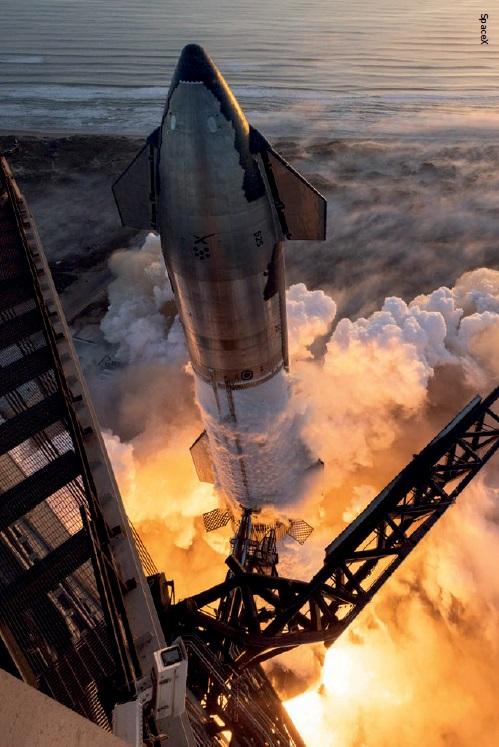 SpaceX Starship launching on its second test flight from the company’s Boca Chica launchpad in Texas, USA, in November 2023.
SpaceX Starship launching on its second test flight from the company’s Boca Chica launchpad in Texas, USA, in November 2023.
To provide safe transport as soon as is practicable, proven technology should be used. The new launcher will therefore need two stages - a booster and an orbiter - because single-stagers require advanced new air-breathing engines which are currently at the research phase of development. Single-stagers can be developed when the technology is available and when the market can afford to develop them.
Horizontal take-off makes it practicable to use jet engines for the early atmospheric part of the lower stage ascent. Jets use between ten and twenty times less propellant than rockets for a given thrust and time, and are more practical for taxiing, ferry flights, diversions to other airfields and aborted landings.
New markets, especially tourism, will lead to a large increase in the number of people travelling to space
Proven jet engines are limited to a maximum speed of between Mach 2 and Mach 3, which is slower than the optimum separation speed. However, this can be increased to around Mach 5 or Mach 6, without involving difficult technology, by adding rocket engines to take over from the jets for the later part of the lower stage trajectory. Because rocket engines can operate in a vacuum, their use on the lower stage enables the high-speed part of its ascent to take place at high altitude in air of low density, so that air and thermal loads can be more readily managed.
A jet-plus-rocket lower stage can be readily adapted to undertake suborbital missions on its own without an upper stage, thereby opening up potentially large new markets, especially carrying passengers on suborbital space experience flights.
The new launcher would complement heavy-lift vehicles like Starship, which would be used for launching the orbital platforms.
To summarise this design logic, the game-changing launcher will be designed for regular supply missions to large orbital platforms. It is likely to be fully reusable, to be piloted, to have wings for horizontal take-off and landing, and to have two stages. The lower stage is likely to have a maximum speed in the high supersonic region using jet engines for the early part of the ascent and rocket engines to increase the separation speed and height. The lower stage is also likely to be able to operate on its own (without an upper stage) for suborbital missions.
![]() The iconic ‘Earthrise’ photograph taken from Apollo 8 on 24 December 1968. The image become the icon of the environment movement almost overnight.
The iconic ‘Earthrise’ photograph taken from Apollo 8 on 24 December 1968. The image become the icon of the environment movement almost overnight.
Spacecab
The Bristol Spaceplanes proposed new launcher, which has the leading design features derived above, is named ‘Spacecab’, to denote its ability to provide high-frequency on-demand transport.
We propose to develop the lower stage first, as it can operate on its own carrying 20 passengers in an attached module on suborbital flights. Suborbital flights have a trajectory close to the vertical and provide just a few minutes in space. Orbital flights involve accelerating to a horizontal speed sufficient for the vehicle to stay up like a satellite. The maximum speed required is about eight times higher than for a suborbital flight.
Early flights in the Spacecab lower stage will be expensive by aviation standards, largely because of the short life of today’s rocket engines. However, they will still be low enough to attract passengers, and we can predict a beneficial downward spiral of lower costs leading to higher traffic levels, leading to more funding to mature the design, leading to even lower costs, and so on.
After a few years of such in-service product improvement, the maturity of the Spacecab lower stage should approach that of an airliner, with a long life, low maintenance costs and the ability to make several flights per day.
We can then derive a preliminary operating cost estimate by comparing the Spacecab lower stage with an airliner of similar size. The cost of flying the airliner on a flight of comparable duration (about one hour) is typically in the region of 20,000 GBP. Carrying typically 200 passengers, the cost per seat is in the region of 100 GBP. We estimate that the cost of flying Spacecab is about five times more than the airliner. This higher cost is due to a more complicated design, a lower production rate and a higher fuel load. Since Spacecab can carry about ten times fewer passengers, largely because of its higher fuel load, the cost per seat will then be about 50 times more, or a few thousand pounds. Market research indicates that a few million people per year would then take a trip to space, which would require a fleet of a few dozen spaceplanes.
These estimates are clearly provisional, but the costs are so much lower, and the fleet size so much higher, than for any other projected use of space that it is safe to conclude that carrying passengers on suborbital flights in the lower stage of a spaceplane designed for ‘safety soon’ is likely to be the first use of space to bring in airline-like operations.
Spacecab ‘proper’ consists of the lower stage carrying a reusable upper stage in place of the attached passenger module. This separates from the lower stage at Mach 4 and carries on to orbit carrying a satellite in the 750 kg class, or six people or supplies to orbital platforms. Spacecab would also eventually mature towards airliner standards, and the resulting low cost would benefit nearly all users of space.
Commercial markets that have so far become profitable involve transporting only small amounts of mass
The ‘Ascender’ two-seat suborbital spaceplane is intended to serve as a lead-in to Spacecab and is like a quarter-scale Spacecab lower stage. It will start to mature the technologies and will provide early experience of routine aeroplane-like spaceflight. We estimate that Ascender can be developed within five years at a cost of about GBP60 million. In this way, the ‘aviation space age’ could be under way at a remarkably low cost.
Historical background
Perhaps surprisingly, spaceplanes broadly comparable to Spacecab were widely studied by several large aircraft companies during the pioneering days of spaceflight, with the aim of replacing the converted ballistic missiles then in use. The European designs were given the generic title of ‘Aerospace Transporter’. Even then, it was clear that consuming one vehicle per launch was never going to lead to an economical transportation system.
In spite of their promise, orbital spaceplanes have never been built. At the time, space agencies had other priorities, and the spaceplane design teams were disbanded. This failure to develop spaceplanes when they first became feasible seems to have created institutions and thought processes that constantly reinforce the habit of using expendable launchers. Had spaceplanes been built at that time we would probably have reached the scenario described in the introduction several years ago.
As far as I am aware, I am the only person who took part in this intensive round of studies (as a junior member of the Hawker Siddeley Aviation spaceplane team) who is still active in the field. My first professional paper on spaceplanes was published in 1965. This might help to explain why Bristol Spaceplanes is the only company pointing out that the required technologies that were considered very advanced in the 1960s have since been proven on other aeroplanes, so that what would then have been a difficult and expensive project to develop should now be straightforward.
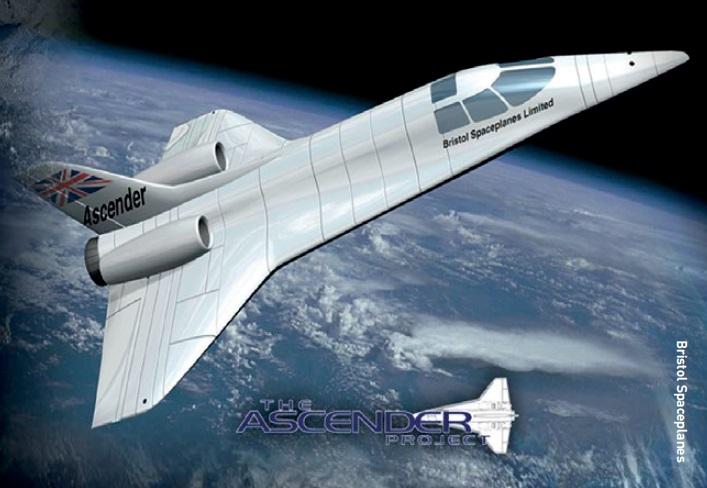 The ‘Ascender’ two-seat suborbital spaceplane is intended to serve as a lead-in to Spacecab. It is estimated that Ascender can be developed within five years at a cost of about £60 million.
The ‘Ascender’ two-seat suborbital spaceplane is intended to serve as a lead-in to Spacecab. It is estimated that Ascender can be developed within five years at a cost of about £60 million.
Environmental balance sheet
The environmental downside of a greatly increased launch rate will be some additional pollution of the upper atmosphere. However, spaceplanes will mostly use liquid hydrogen and liquid oxygen propellants, so the exhaust product will be steam, which is unlikely to be harmful.
On the other hand, low-cost access to space will provide several environmental benefits: the cost of scientific measurements of the Earth from space, which form a key part in understanding climate change, will be greatly reduced; there will be a boost to the hydrogen economy, as spaceplanes will use mostly that fuel; the cost of clearing space debris and of setting up a system to protect the Earth from asteroid strikes will be greatly reduced; it will provide a boost to global economic growth, with many new high-quality jobs; it will reduce the cost of asteroid mining in the longer term, thereby starting to relieve human pressure on our home planet.
More speculatively, but potentially more importantly, it could change the way we think about our planet. Most astronauts return from space with a more global perspective than when they went up, and are more environmentally sensitive. Millions of tourists seeing Spaceship Earth for themselves could provide a boost to global action on the climate and conservation. There is a historical precedent for this. The famous ‘Earthrise’ photograph, taken by astronaut William Anders from Apollo 8 in 1968, became the icon of the environment movement almost overnight.
So, it is safe to predict that the benefits to the environment of spaceplane development will far outweigh the disadvantages.
Future steps
A jet-plus-rocket lower stage can be readily adapted to undertake suborbital missions without an upper stage, opening up potentially large new markets
Building an orbital spaceplane along the lines of several proposed in the 1960s would enable the development of new markets and a large increase in launch rate. The resulting combination of full reusability and far higher traffic levels would provide the economies of scale needed for airline-like transport to and from orbit.
Such a launcher can now be developed using only proven technologies, and carrying passengers on suborbital space experience flights in the lower stage of the new launcher is likely to be the first use of space to bring in airline-like operations. The resulting launch cost reduction would benefit nearly all users of space.
As a lead-in to this new launcher, a small (two-seat) suborbital spaceplane would provide useful early experience of low-cost aeroplane-like spaceflight and with development costs of a few tens of millions of GBP, would likely even be a profitable project in its own right. There is a compelling case for further study of the proposed roadmap.
About the author
David Ashford is founder and CEO of Bristol Spaceplanes Ltd, an innovative small company developing the Ascender spaceplane. He graduated from Imperial College London in aeronautical engineering and spent one year at Princeton University, USA, doing post-graduate research on rocket motors. His first job, in 1961, was with the Hawker Siddeley Aviation spaceplane design team. He has since worked as an aerodynamicist, project engineer and project manager on various aerospace projects, including the DC-8, DC-10, Concorde, the Skylark sounding rocket and various naval missile and electronic warfare systems at Douglas Aircraft and companies that are now parts of BAE Systems. His book, Space Exploration: All That Matters, was published by Hodder and McGraw-Hill in 2013.





